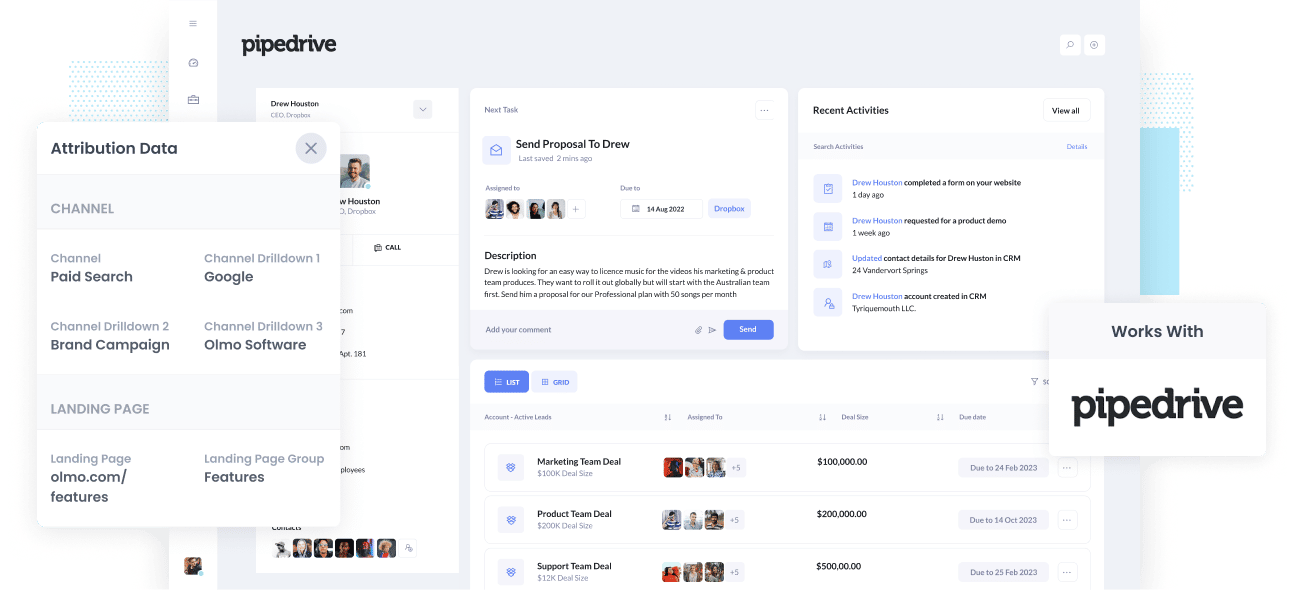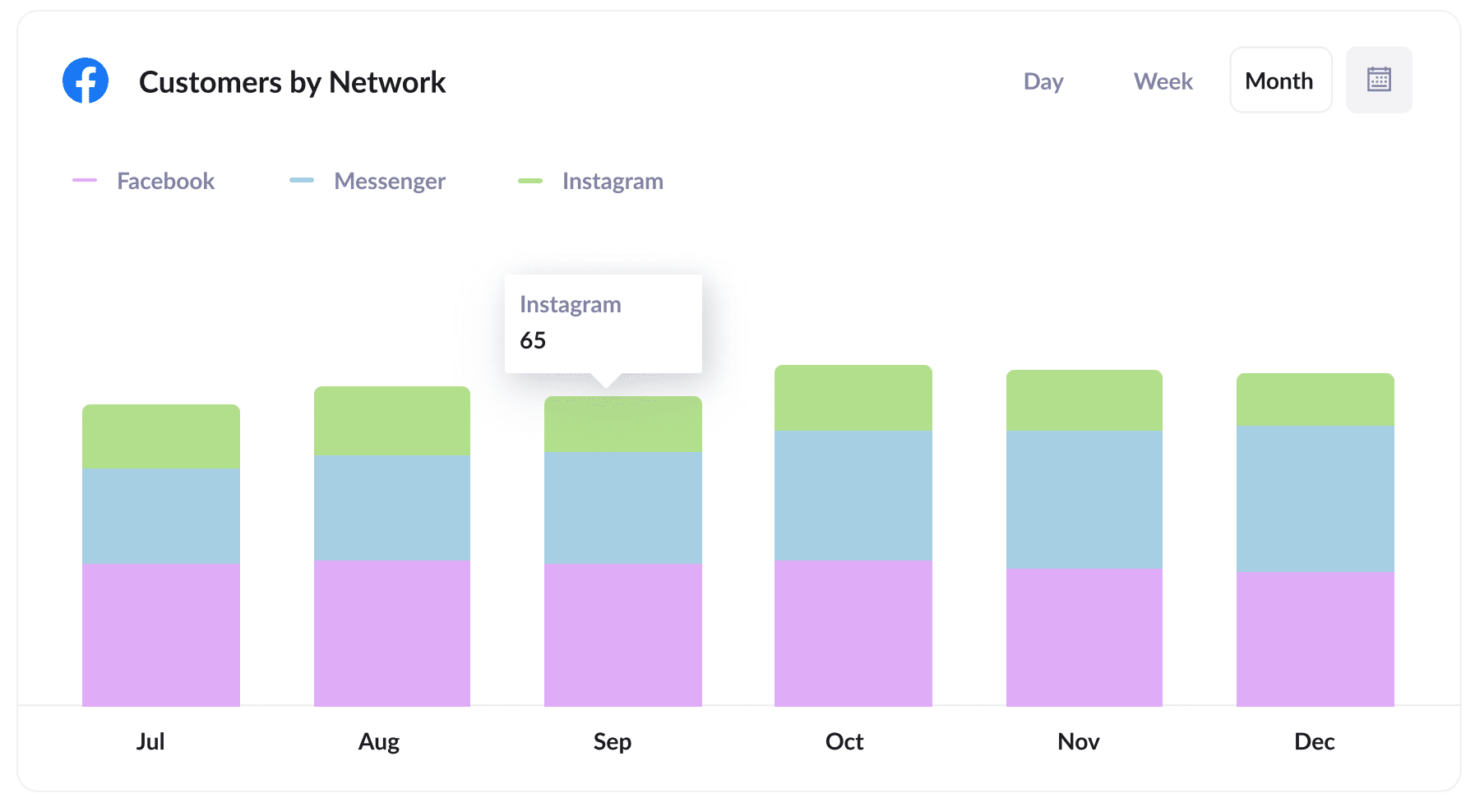The easiest way to track Instagram Ads in Pipedrive
Want to know how many leads and customers you get from your Instagram Ads? Read on to learn how to track them in Pipedrive.

Tools like Google Analytics are great for understanding how many visitors you get to your website from your ad campaigns (like Instagram Ads).
But if you want to actually track the ROI of your Instagram Ads, then you need to track how many leads and customers you get from them (not just how many website visitors you receive).
In this article, we'll show you how to use a tool called Attributer to track the number of leads and customers you get from your Instagram Ads - and you can do it in 4 simple steps!
4 steps to track Instagram Ads in Pipedrive
Tracking how many leads and customers you get from Instagram Ads in Pipedrive is really easy to do by following these 4 steps:
1. Add UTM parameters to your Instagram Ads

The first thing to do is add UTM parameters to your Instagram Ads.
Never heard of UTM parameters before? Put simply, they are extra pieces of text at the end of the URL you use when sending people from your campaigns to your website.
So if the page you are sending someone to is attributer.io/integrations/pipedrive then your final URL (with UTM parameters) might look a bit like this:
attributer.io/integrations/pipedrive?utm_medium=paidsocial&utm_source=instagram&utm_campaign=brand-campaign
While you can structure UTM parameters however you like, generally, best practice for Instagram Ads is this:
- UTM Medium = Paid social
- UTM Source = Instagram
- UTM Campaign = The name of your campaign
- UTM Term = The name of the ad set the ad belongs to
- UTM Content = The specific ad
Tagging URLs with UTM parameters is easy and there are free tools available on the web which can help you do it.
2. Install Attributer and add some hidden fields

Step two is to install Attributer on your website.
When you sign up for a 14-day free trial, we'll give you a small piece of code to add to your website (instructions on how to add it can be found here).
After you've added the code, the next step is to include a series of hidden fields to your forms, including:
- Channel
- Channel Drilldown 1
- Channel Drilldown 2
- Channel Drilldown 3
- Channel Drilldown 4
Attributer works with dozens of form builders (including Gravity Forms, Jotform, Webflow Forms, Typeform and more). Depending on which form builder you use, it's usually very easy to add hidden fields and step-by-step instructions for many of form builders can be seen here.
3. Attributer transfers Instagram Ads data into hidden fields

Once it's all up and running, Attributer starts tracking where your website visitors are coming from (including those from your Instagram Ads).
It will then categorise each visitor into a series of channels (like Paid Social, Paid Search, Organic Search, etc) and store the information in a cookie in the visitor's browser.
When the visitor completes a form on your website, Attributer will write the information on where they came from into the hidden fields.
4. Instagram Ads data is sent to Pipedrive

The last step! When a visitor submits a form on your website, the lead source data is captured by your form tool along with the lead's name, email, etc. All of this data can be sent to Pipedrive.
Once the data is in Pipedrive, you can use it to:
- Run reports that show how many leads you've received from your Instagram Ads, how many converted to customers, how much revenue you've generated, etc.
- Tailor your sales outreach when you follow up with the new lead. For example, if they came from an Instagram ad that promotes a specific product or service, you can speak directly to that in your emails or calls.
What data gets captured in Pipedrive?
Each time a form is submitted on your website, Attributer will pass through the following information:
1. Marketing channel data
Attributer will send details regarding how the lead arrived at your website.
Consider this scenario: you're a marketer working for a fencing company, and you're currently running Instagram ads to showcase your new collection of robust fencing.
If an individual were to click on one of your ads and subsequently fill out a form on your website, the below information would be sent (based on the UTM parameters you attached to your ads):
- Channel: Paid Social
- Channel Drilldown 1: Instagram
- Channel Drilldown 2: Robust Fencing Campaign (or the specific campaign name)
- Channel Drilldown 3: Metal Ad (or whatever ad creative they clicked on)
2. Landing page data
Attributer also sends the original landing page (e.g., strongfence.com/blog/best-fence-types) and its corresponding landing page category (e.g., /blog).
The result: You gain the ability to track the number of leads originating from different content categories on your website (such as your blog), enabling you to dive deeper into the specific blog posts that are driving the highest lead generation and revenue.
What is Attributer and why use it?
Attributer is a small piece of code that you put on your website.
When someone visits your website, Attributer looks at where they came from and puts them into different groups, like figuring out if they came from social media ads, search results, or other places. This information is saved as a cookie in the visitor's web browser.
If that person fills out a form on your website, Attributer takes the data saved in the cookie and puts those notes into the hidden fields in the form. This way, all that info goes to your other backend tools you have connected to your forms, such as your CRM, email marketing tool, billing platform, analytics tools, etc.
Here's why Attributer is really good for tracking Instagram Ads in Pipedrive:
- It's super smart: Besides knowing if people came from Instagram Ads, Attributer can also figure out if they came from other places like Google searches, other social media platforms, or other websites. This helps you know where all your customers are coming from, not just the Instagram ones.
- It remembers everything: Unlike other tools, Attributer keeps important information in a cookie inside the person's web browser. This cookie makes sure that no matter which page the person finishes filling out a form on, the important info still travels with them.
- It fixes mistakes: Attributer was designed to understand if things are a bit mixed up, like using "instagram" in one place and "instagram.com" in another. Even when things are confusing, Attributer knows what to do and puts everything in the right group. This means your info is always correct.
3 example reports you can run when you track your Instagram Ads in Pipedrive
Before launching Attributer, I led marketing and analytics teams at a variety of companies for more than 15 years.
Over the years, I've probably spent over $1 million in ads on Instagram and other social networks and have ran hundreds of reports to understand what campaigns were working best.
Here are a few of the reports I found most useful:
1. Leads by channel

The chart above is really helpful because it tells you how many new potential customers you're getting every month and sorts them based on where they found you. This big picture view helps you understand where most of your customers are coming from and where you should focus to get even more customers.
For example, if the chart shows that most of your customers are finding you through Organic Search (like in the graph), but you're spending a lot of money on Instagram Ads, it might be a good idea to switch up your strategy.
2. Customers by network

If you're running ads on Instagram, you probably also have ads on Facebook and other platforms.
If this sounds like you, then this report is really useful. It tells you the number of customers you're getting from each of these advertising networks. This information is valuable because it helps you figure out where to spend your money wisely for the best results.
3. Revenue by campaign

This graph show how much money you've made from the different campaigns you're running on Instagram.
It's useful because it lets you see which campaigns are making more money than they cost. This helps you decide where to allocate your budget to boost revenue.
Wrap up
If you've been looking for a simple way to track the number of leads, customers and revenue you are getting from your Instagram Ads, then Attributer can help.
It will enable you to see the exact source of every lead, right down to the exact campaign, ad set, or ad they clicked.
Best of all, it's free to get started and only takes about 10 minutes to set up. So start a free 14-day trial of Attributer today to see how it can help you!
Get Started For Free
Start your 14-day free trial of Attributer today!

About the Author
Aaron Beashel is the founder of Attributer and has over 15 years of experience in marketing & analytics. He is a recognized expert in the subject and has written articles for leading websites such as Hubspot, Zapier, Search Engine Journal, Buffer, Unbounce & more. Learn more about Aaron here.
